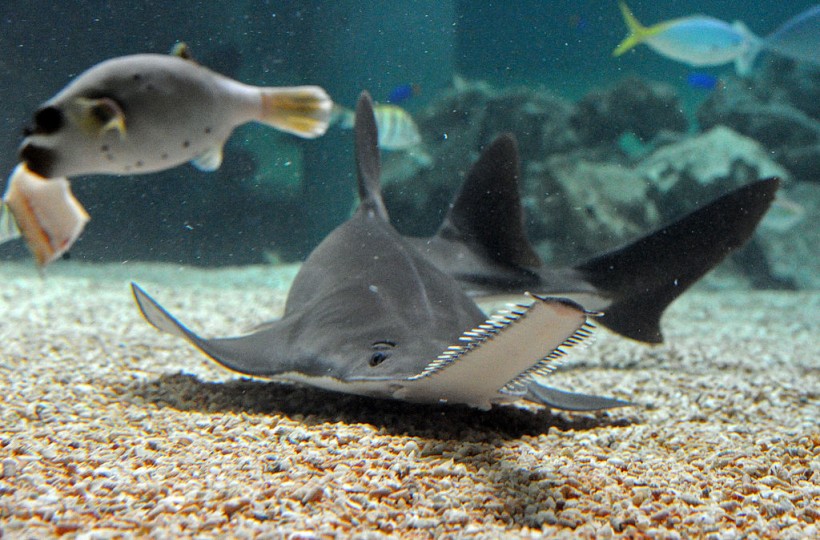Scientists have been baffled by how critically endangered sawfish keep on washing up dead and dying off the shores of the Florida Keys.
Endangered and Critically Endangered Sawfish
There are five different sawfish species all over the world. However, the smalltooth sawfish is the only one that is native to the waters of the US. They are marked by their flattened and long snout covered with teeth-like structures, called rostrum, on each side. They can reach a length of 16 feet.
While the southeast US used to regularly spot such fish, they can now only be spotted in small Florida areas. They have also been categorized as "critically endangered" in the Nature Red List of the International Union for Conservation. They are also listed as "endangered" based on the US Endangered Species Act.
This species faces major threats, including degradation and destruction of their important nursery areas, being unintentionally caught by fishing gear, or being deliberately caught for traditional medicine or illegal trade.
ALSO READ: Over 100 Dead, Highly Venomous Sea Creatures Wash Up on Florida
Dead and Dying Critically Endangered Sawfish Spotted
In the last month, 20 rare sawfish have been spotted dead on shores. They have also been collected. Meanwhile, more than 60 other fish were seen thrashing in the shallow water like they were in death throes.
Their mysterious deaths have baffled scientists. Possible explanations range from higher ocean temperatures to toxic algae.
Since November 2023, these fish have been observed to have strange behavior around the Florida Keys shores. They have been increasingly seen swimming in circles and thrashing around. Such behaviors have never been observed in the species before, puzzling scientists.
Fish ecologist Dean Grubbs from Florida State University and a member of the sawfish recovery team of the National Oceanic and Atmospheric Administration, explains that these fish should not be swimming in circles and be that close to the shore. The fish ecologist adds that there is no reason that their rostrum should be out of water.
Tracking data also shows that sawfish are typically found in waters with depths of 100 to 200 feet, as opposed to being near the shore.
The sawfish then started being spotted dead on the shores. So far, there have been 20 carcasses found. Specialists think that it could be an underestimation of the actual number of deaths.
Mysterious Cause of Death
The researchers have examined the 20 specimens of the dead sawfish. However, tests have not shed light on their odd deaths. Toxin traces have been spotted within their bodies, as well as gambierdiscus, which is a dinoflagellate algae. Water testing close to Keys also revealed increased gambierdiscus levels.
While gambierdiscus is known to lead to ciguatera fish poisoning in humans, fish have never been seen to get sick due to these algal toxins. This means that gambierdiscus could not be the culprit of the fish deaths.
Algae expert Mike Parson from the Florida Gulf Coast University and a member of the Blue Green Algae Task Force of the state, shares that they did not find any smoking guns, adding that it is not as easy as they hoped it would be.
Another possible explanation behind the mysterious death waves is the heightened ocean temperatures. Last summer, an ocean heatwave led to a five-degree temperature spike in some waters off the Florida Keys.
Fish ecologist Martin Grossell from the University of Miami, who specializes in toxins that harm fish and in how fish work, explains that the affected ecosystem in the Lower Keys is an ecosystem that is very resilient and that has gone through grave change.
Heightened ocean temperatures mixed with different factors, such as other water chemicals and sewage pollution, could lead to marine ecosystem changes that affect sawfish in mysterious ways.
RELATED ARTICLE: Thousands of Dead Fish Washed Ashore in South Australia Leave 'Horrendous' Odor; What's the Reason Behind the Mass Kill Event
Check out more news and information on Environment & Climate in Science Times.















